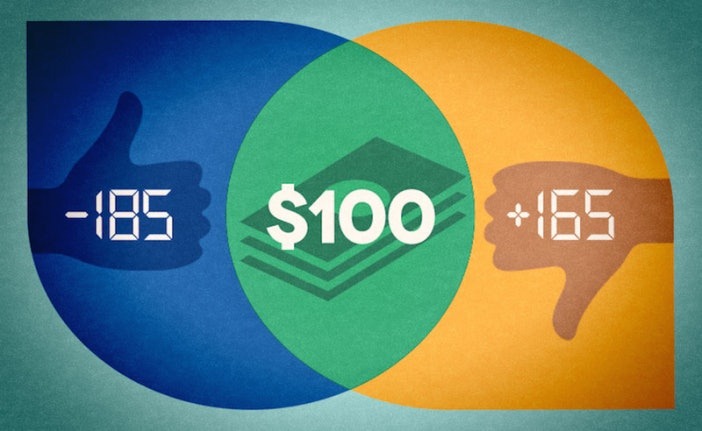Moneyline odds in just about any major sports can offer quite a bit of value if you know where and how to look. The first important step for any recreational sports bettor is learning how to read and understand moneyline odds. While they can appear to be a bit intimidating at first, it is actually a rather simple betting concept to grasp.
Odds for any sporting event are basically a handicapping tool for sportsbooks. The whole goal of booking a sports bet is to try and distribute the money as evenly as possible on both sides of any betting event. Moneyline odds pit one side against the other in an even matchup that dictates betting on the outcome with increased risk for betting on the favorite as opposed to an increased reward for betting on the underdog.
Most of the bets that are placed for an NFL game involve the use of a pointspread as a way to handicap the favorite against the underdog, but those same games will most times have a corresponding moneyline that basically does the same exact thing. The following line item betting odds for a NFL game at your typical online sportsbook should demonstrate the difference between the two:
Green Bay Packers +3 (-110) +115
Dallas Cowboys -3 (-110) -135
In this matchup, the Cowboys are three-point home favorites against Green Bay. The -110 next two each team reflects the standard 10 percent commission you would pay on a losing bet. The next number in the listing is the moneyline. In this example, if you bet $100 on Green Bay as an underdog to win in a straight-up matchup, you would stand to make $115 if you are correct. If the Packers lose straight-up, you would owe the $100 on this bet.
Betting on Dallas as a favorite adds more risk to the equation. If you bet that same $100 on the Cowboys to win, you would collect $100 on a winning bet. However, if they lose you would now owe $135.
The bigger the favorite, the bigger the risk on a moneyline bet. For example, if Pittsburgh is a 10-point favorite to win this Sunday, you may have to risk close to $500 to win that same $100 bet. Betting NFL moneylines tends to offer more value to underdogs as long as you are confident they can pull off the SU upset. This makes home underdogs a bit more attractive then betting on a team to try and win as an underdog on the road.
Did you see our how to read and understand basic sports betting odds? It is the first in our series of “How To’s”, so be sure to keep your eye out for them.
Moneyline odds are used for a wide variety of sports, but they are the primary way to bet on baseball, hockey and soccer. MLB moneylines are heavily influenced by the starting pitcher for each team, while the starting goalie in each team’s net will have a big impact on the actual moneyline betting odds in your typical NHL game. A third dimension that is somewhat unique to betting on a soccer match is a third moneyline for a draw or tie in certain forms of competition.
Some other popular betting options that use a moneyline to set the odds are proposition bets, which are commonly referred to as props. For example, going back to that Green Bay at Dallas game, you may see a prop bet posted for which team will score first, as follows:
First Team to Score: Green Bay (+110) Dallas (-120)
If you think that Green Bay will score first, then your return on a $100 bet would be $110 if you are correct. You would have to risk $120 to win $100 betting on the prop that Dallas puts the first points of the game on the board.

